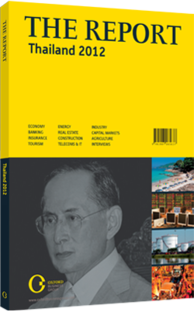OBG talks to Surin Pitsuwan, Secretary-General, ASEAN

Interview: Surin Pitsuwan
How will a free and open investment regime help increase investment into ASEAN?
SURIN PITSUWAN: ASEAN’s vision for an integrated regional economy includes the free flow of investment and services. To this end, set out several strategic initiatives in the ASEAN Economic Community (AEC) Blueprint and has taken concrete steps to realise these by 2015.
One of the bold steps that ASEAN took to establish this free and open regime is the ASEAN Comprehensive Investment Agreement (ACIA). An important pillar of the ACIA is its liberalisation component, in which a negative list approach was adopted in the so-called reservation list, with all else being open. ASEAN also agreed to progressively reduce or eliminate the reservations contained in the list following the strategic phases outlined in the AEC Blueprint, and member states are working to improve their investment regimes.
On a far greater scale, ASEAN has also entered into free trade agreements with dialogue partners through which we are trying to expand our reach in terms of source of investment. We have to provide adequate protection to investors and their investments to remain competitive. Our agreements have safeguarding provisions which enable direct recourse through the investor-state dispute settlement mechanisms.
Promotion and facilitation are two of the main pillars of the ACIA, and we recognise that we has to increase awareness of ASEAN as an integrated investment area in order to attract and increase both intra-ASEAN and foreign investment into the region. To do this we are looking at streamlining and simplifying procedures for investment applications and approvals and establishing one-stop shops for investors.
How are logistical integration issues being addressed in order to transform ASEAN into a single market?
SURIN: Logistics services is the 12th Priority Integration Sector (PIS) and ASEAN plans to achieve full integration of logistics services by 2013. ASEAN has a roadmap for this process, which has been endorsed by the ASEAN economic ministers (AEM) in August 2007. The roadmap provides for the detailed measures and action plans to integrate logistics services, and involves the participation of various related ASEAN bodies in trade, services, Customs, transport, telecommunications and investment, as well as private sector bodies.
ASEAN also actively conducts public-private engagement dialogues. In October 2010, ASEAN leaders adopted the Master Plan on ASEAN Connectivity, which is intended to add value to and expedite the implementation of the logistics roadmap and the AEC Blueprint, and to address issues such as market access, trade and Customs facilitation, supply chain security and cross-border, inter-state and multimodal transport through clear measures, targets and timelines.
From the trade in services side, significant progress is made in the liberalisation of the nine logistics services subsectors. This year all member states will be required to open their logistics services up to 51% foreign ownership, and up to 70% by the end of 2013. With these ambitious targets, trade barriers will be kept at minimum level and links between the logistics providers among ASEAN countries will be improved.
How can ASEAN nations work together to position the region as a world leader in tourism?
SURIN: ASEAN has been implementing a number of regional initiatives to promote ASEAN as one tourism destination or market, such as developing multiple-country or region-wide tour packages, joint promotion campaigns and ASEAN-wide tourism websites.
ASEAN is currently coordinating joint marketing efforts in our main source markets, i.e. China, Korea, Japan and Australia. This joint work is being undertaken in addition to the individual tourism offices that member states already operate in these markets. The collaboration includes: establishment of ASEAN common area at international travel fairs, the creation of the ASEAN Promotional Chapter for Tourism in Australia and promotion of tourism products on a dedicated webpage.
You have reached the limit of premium articles you can view for free.
Choose from the options below to purchase print or digital editions of our Reports. You can also purchase a website subscription giving you unlimited access to all of our Reports online for 12 months.
If you have already purchased this Report or have a website subscription, please login to continue.

